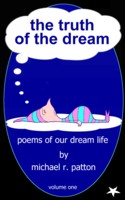I really like the theory about why the spiny anteater doesn’t dream…
So I’m disappointed that someone has poked holes in it.
The spiny anteater (also known as the echidna) was one of only two mammals that didn’t show rapid-eye movement patterns in their sleep. The other was the duckbill platypus.
Since the echidna and the platypus didn’t have REM, they apparently didn’t dream.
The spiny anteater also has the largest prefrontal cortex in relation to brain size of all animals except humans. You can think of the prefrontal cortex as “the thinking part of the brain”.
But despite this extra brain mass, the spiny anteater is no rocket scientist.
So one theory is: the spiny anteater needs the extra brain space to process information that would, in other mammals, be processed during dream sleep.
Taking this idea further, some researchers believe that dreaming evolved so that mammalian brains could remain relatively small and yet process larger and larger amounts of information.
Sounded good, until…
…J.M. Siegel, of the Center for Sleep Research at UCLA, re-tested the echidna and found brain wave patterns that were similar to those found during REM sleep. These REM-like periods come in short bursts.
So it looks like the spiny anteater does manage sneak in some brief periods of dream sleep.
Dr. Siegel speculates that the echidna developed this type of REM sleep as a survival technique.
The echidna is often exposed to danger from predators. So it needs to be able to wake quickly and move. That would be difficult during a prolonged period of REM sleep.
Typically, predatory animals have more REM while the animals they prey upon have less REM.
So why then does the spiny anteater need such a large brain? I’m sure someone out there is still working on that one. I’m also guessing there are researchers who would disagree with Siegel’s conclusions.
As for the duckbill platypus…
…I don’t know about its brain size. However, recent tests show REM-like patterns in the platypus as well.
One can just imagine the little platypus being hooked up to all kinds of wires and electrodes.
© 2011, Michael R. Patton
myth steps



I have read that echidnas are actually very difficult to track or to trap and that they live in a variety of very different ecosystems. Perhaps their large prefrontal cortexes have something to do with their ability to survive for upward of 60 years in such conditions with lots of scary predators about. I guess this doesn’t really mean they can build rockets though.
Perhaps they simply don’t want to build rockets. It’s a choice.
Hello! I could have sworn I’ve visited this site before but after browsing through a few of the posts I realized it’s new to me.
Anyhow, I’m certainly pleased I came across it and I’ll be book-marking it and checking back frequently!
Great goods from you, man. I have understand your stuff previous
to and you are just extremely fantastic. I really like
what you have acquired here, certainly like what
you are saying and the way in which you say it. You make it
enjoyable and you still care for to keep it smart.
I can’t wait to read far more from you. This is actually a great web
site.